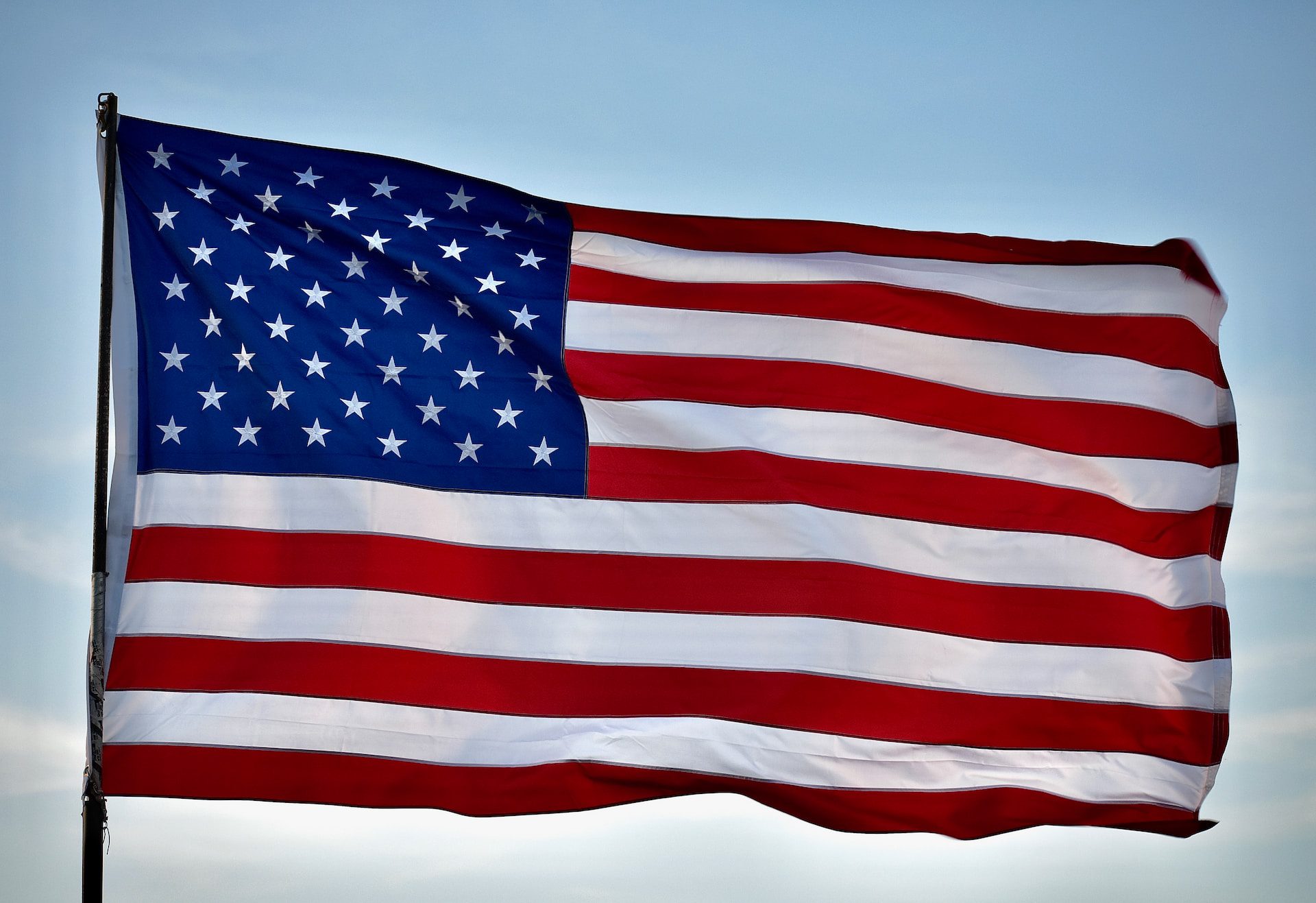This month on June 14th Americans celebrate National Flag Day, a day set aside to observe and honor our flag, Old Glory. I was not familiar with the history of this day, but I had fun researching how it came about and uncovered some interesting facts about the U.S. Flag.
June 14th commemorates the date in 1777 when the Second Continental Congress approved the design for its first national flag. They passed a resolution stating that the flag be thirteen alternating red and white stripes and that the union be represented by thirteen white stars against a blue field, representing a new constellation.
The idea of an annual flag day originated with a small-town Wisconsin teacher named Bernard Cigrand back in 1885. That year on June 14th, he led his school in a formal observance of the holiday. However, this date was not made official until 1916, when President Woodrow Wilson declared June 14th as Flag Day.
Although it is believed that Betsy Ross made the first American flag, there is no historical evidence that this was the case. However, the story retold by her grandson, William Canby, was widely accepted. Canby reported to the press that in 1776, George Washington, Robert Morris, and Colonel George Ross visited Betsy Ross and presented her with a sketch of a flag and proceeded to ask Ross to create this flag, which Ross agreed to, but with a few suggested changes.
Interesting to note, the current design of the United States Flag goes back to the 1950’s and is credited to a then 17-year-old Ohio student, Bob Heft. As part of a school project, Heft, disassembled his family’s 48-star flag and in anticipation of Alaska and Hawaii being admitted to the Union, added 50 stars in a proportional pattern. He not only submitted his project to his history teacher, but he also sent the flag to his congressman, Walter Moeller. Moeller presented it to President Eisenhower who selected Heft’s design, and on July 4, 1960, the president and Bob Heft stood together as the 50-star flag was raised for the first time.
The flag holds great significance for Americans and is well deserving of its own day of recognition. The flag is representation of our great country, of the principles by which our country was founded, and of the courage of those willing to fight to preserve our freedoms. Because of its representation, the flag is to be held in the upmost regard, much so that Flag Codes have been stipulated in Public Law. The U.S. Flag Code addresses etiquette, rules, and guidelines as to how to properly display the American flag, how to hoist and lower the flag, how to display the flag alongside other flags, how NOT to display the flag, and how to properly dispose of the flag. Below lists a few of the rules:
- The Flag Code stipulates that the Stars and Stripes should not be used as apparel, bedding, or drapery.
- Etiquette calls for American flags to be illuminated by sunlight or another light source while on display.
- The flag should never be displayed with the union stars down, unless as a signal of dire distress.
- The flag should never touch anything beneath it, such as the ground, the floor, water, or merchandise.
- When the flags of cities, states, localities, or groups are flown on the same staff as the American flag, Old Glory should always be at the peak.
- When a flag is no longer in good condition, it should be destroyed in a dignified, ceremonial fashion, preferably by burning.1
June 14th is a call to all Americans to honor our flag–to fly our flag high, to stand in respect, to put our hand over our heart, and pledge our allegiance:
“I pledge allegiance to the Flag of the United States of America, and to the Republic for which it stands, one Nation under God, indivisible, with liberty and justice for all.”
1Cohen, Jennie. “What is Flag Day?” History, June 14, 2018, https://www.history.com/news/what-is-flag-day. Accessed 8 June 2023.


